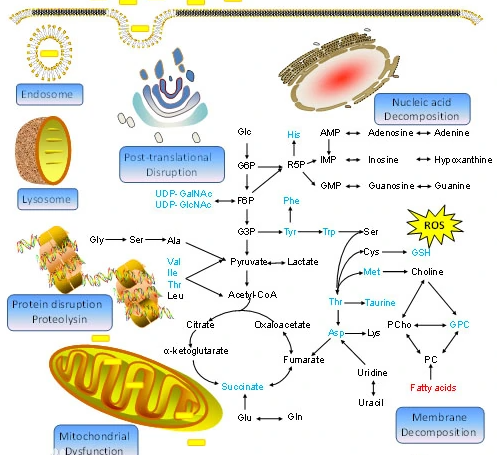Professional industry ceramic supplier, silicon nitride, silicon carbide, aluminum nitride and any other kinds of ceramics.
Overview of colloidal gold nano gold solution
Nano-gold refers to the tiny particles of gold with a diameter of 1-100nm. It has high electron density, dielectric properties and catalysis. It can be combined with a variety of biological macromolecules without affecting its biological activity. Various nano-gold particles of different particle sizes can be conveniently prepared by the reduction method from chloroauric acid, and the color varies from red to purple depending on the diameter.
Nano-gold is made of high-purity gold as a raw material. Through special new processing technology, the particle size of gold is 15nm or less, which greatly improves the inherent properties of gold, such as catalysis, free radical scavenging, and dispersion effects.

Gold, that is, gold, the chemical element symbol is gold, which has the characteristics of high safety, high stability, oxidation resistance, and corrosion resistance.
Application of colloidal gold nano gold solution
As one of the four major modern labeling technologies, nanogold labelling technology is essentially a coating process in which proteins and other polymers are adsorbed onto the surface of nanogold particles. The adsorption mechanism may be the negative charge on the surface of the gold nanoparticle, which forms a firm bond with the positive charge group of the protein due to electrostatic adsorption, and will not denature the biomolecules after adsorption. Due to the high electron density of the gold particles, the gold-labeled protein At the junction, dark-brown particles can be seen under the microscope. When these markers aggregate in large amounts at the corresponding ligands, red or pink spots can be seen with the naked eye, so they are used in qualitative or semi-quantitative rapid immunoassay methods. Because the spherical gold nanoparticles have a strong adsorption function for proteins, they can bind non-covalently with Staphylococcus A protein, immunoglobulins, toxins, glycoproteins, enzymes, antibiotics, hormones, bovine serum albumin and so on. Become a very useful tool in research and experimentation.
With the continuous development of science and technology, food analysis and detection technology is constantly updated, perfected and developed rapidly. In particular, rapid detection technology can better adapt to the modern high-efficiency, fast pace and meet the requirements of society. The instrumental analysis method can ensure the accuracy and accuracy of the data, but its process is still relatively cumbersome. Although the development process of immunoassays and other rapid detection technologies using gold nanoparticles as a marker requires a lot of investment and a long time, they are simple, fast, sensitive, specific, inexpensive, and require less sample volume. Other advantages, its sensitivity is consistent with conventional instrumental analysis, suitable for on-site screening, and the gold immunochromatographic technology is developing in the direction of quantitative, semi-quantitative detection and multiple detection, which further reflects the advantages of gold labeling technology. In short, the advantages of rapid detection technology such as speed, sensitivity, simplicity, etc., make it have a wide range of application value and development prospects in food hygiene and quarantine and environmental testing.
Food detection and analysis generally use chemical analysis (CA), thin layer chromatography (TLC), gas chromatography (GC), high performance liquid chromatography (HPLC), but it requires cumbersome and time-consuming pre-processing, and sample loss is also Larger. Compared with the lower sensitivity CA and TLC methods, GC and HPLC have higher sensitivity, but they require high technical requirements and expensive instruments, which are not suitable for rapid on-site determination and popularization. However, the detection technology using nano-gold as an immunological marker is making up for it. Because of the shortcomings of these technologies, they are being used more and more in modern food analysis and testing.
Colloidal gold nano gold solution price
The price of the colloidal gold nano-gold solution varies randomly with production costs, transportation costs, international conditions, exchange rates, and the market supply and demand of the colloidal gold nano-gold solution. Tanki New Materials Co. Ltd aims to help all industries and chemical wholesalers find high-quality products by providing a full range of products. If you are looking for colloidal gold nano gold solution, please contact us for the latest price.
Colloidal gold nano gold solution supplier
As a global supplier of colloidal gold nano-gold solutions, Tanki New Materials Co., Ltd. Has extensive experience in the performance, application and cost-effective manufacturing of advanced and engineering materials. The company has successfully developed a series of powder materials (including oxides, carbides, nitrides, single metals, etc.), high-purity targets, and functional materials. Ceramics and structural equipment, and provide OEM services
| Technical Parameter of Colloidal Gold Nano Gold Solution | ||||||
| Product Name | MF | Purity | Particle Size | Bulk Density | Melting Point | Color |
| Colloidal Gold | Au | 1000ppm | 5-15nm | 1.01 g/cm3 | 1064℃ | Purple |
| Colloidal Gold Properties | |
| Other Names | gold colloid solution, gold nanodispersion, |
| gold nanoparticle dispersion | |
| CAS No. | 7440-57-5 |
| Compound Formula | Au |
| Molecular Weight | 196.97 |
| Appearance | Purple Liquid |
| Melting Point | 1064.43℃ |
| Boiling Point | 3080℃ |
| Density | 19.3 g/cm3 |
| Solubility in H2O | N/A |
| Electrical Resistivity | 2.214 microhm-cm @ 20 °C |
| 0.44 | |
| Tensile Strength | N/A |
| Thermal Conductivity | 3.18 W/cm/K @ 298.2 K |
| Thermal Expansion | (25 °C) 14.2 µm·m-1·K-1 |
| Vickers Hardness | 216 MPa |
| Young's Modulus | 79 GPa |
